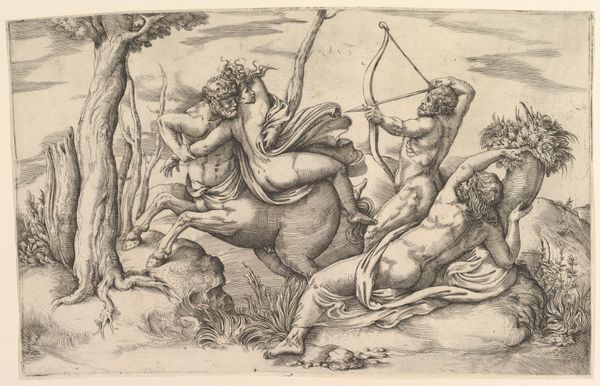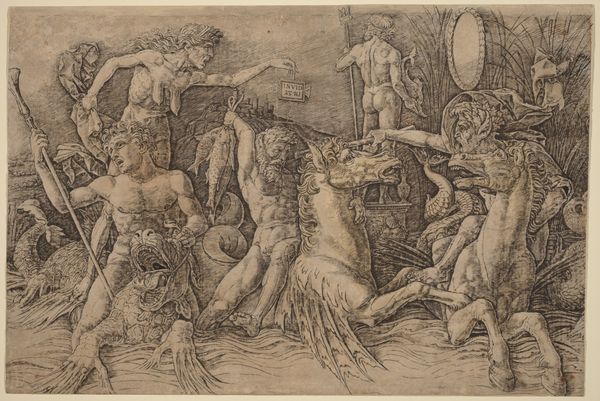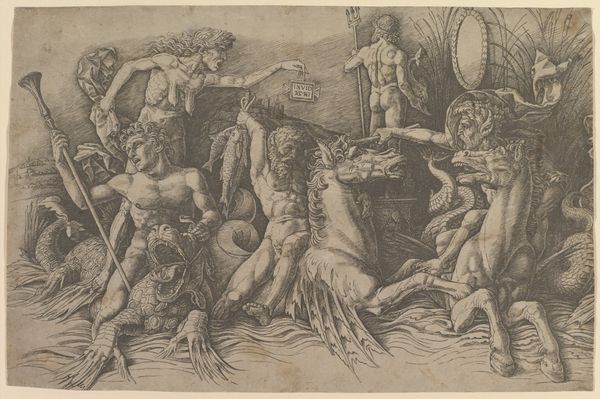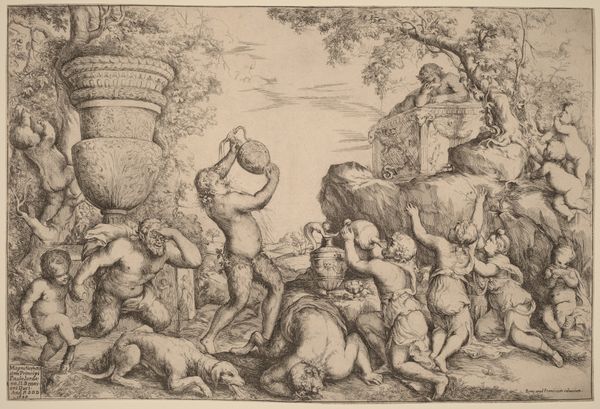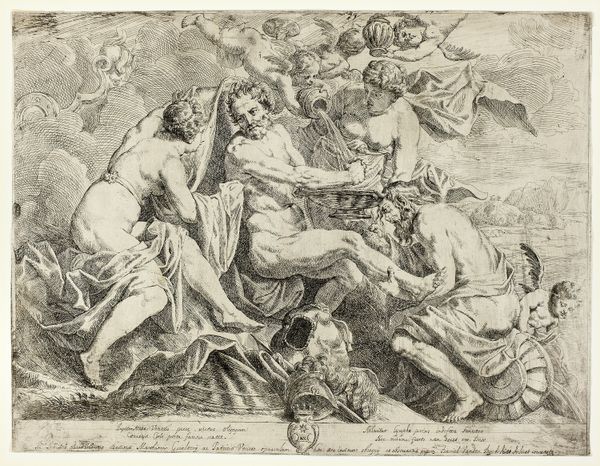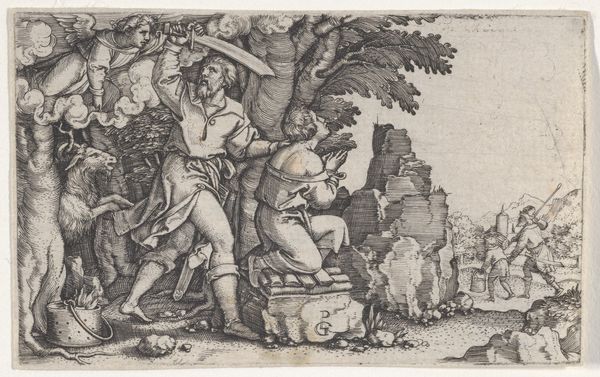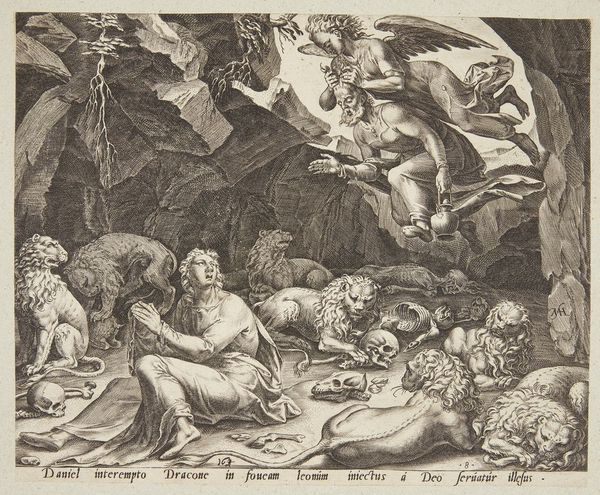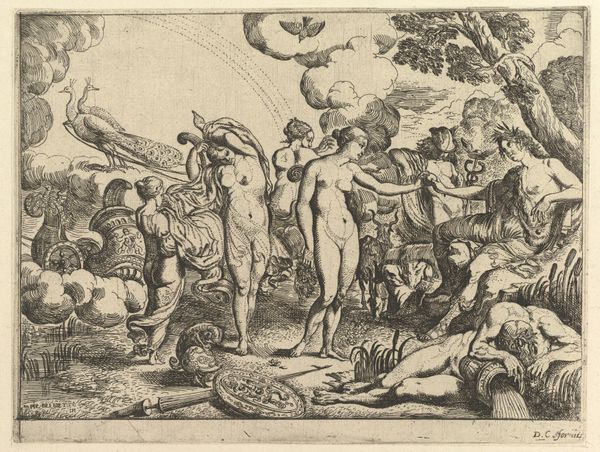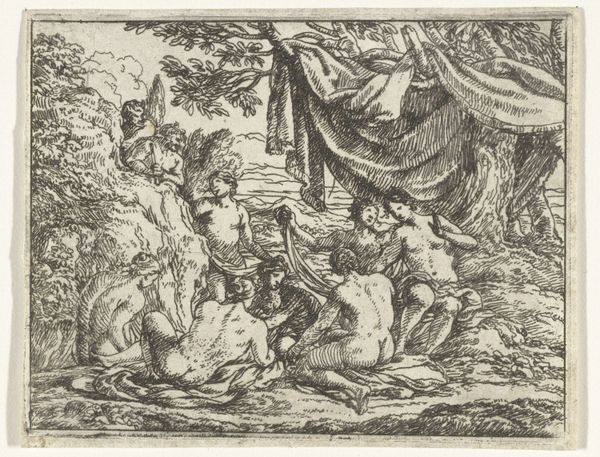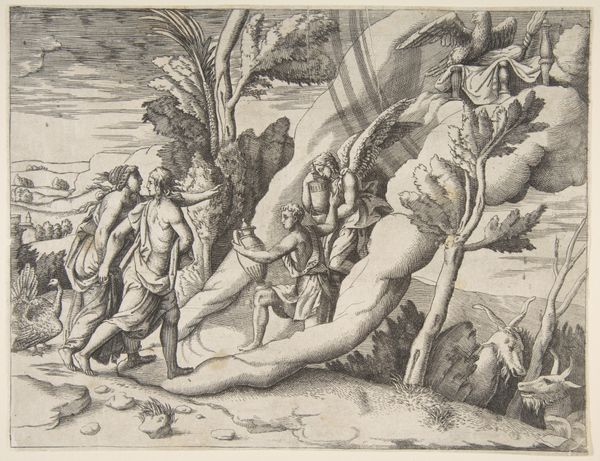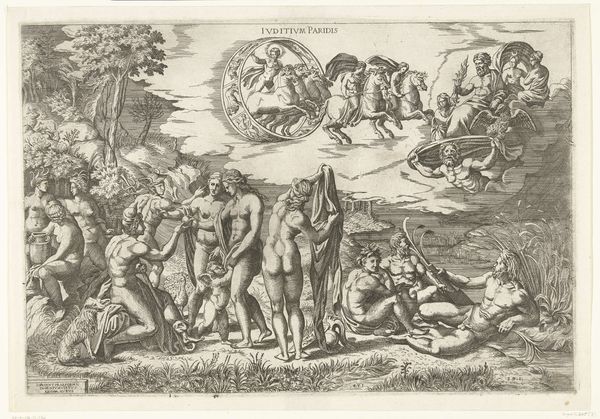
Silenus Reclining with Goats and Satyrs n.d.
0:00
0:00
drawing, print, etching, ink, pen
#
drawing
#
ink drawing
#
baroque
# print
#
pen sketch
#
etching
#
pencil sketch
#
landscape
#
figuration
#
ink
#
pen
#
history-painting
Dimensions: 144.5 × 200 mm
Copyright: Public Domain
Curator: Before us is “Silenus Reclining with Goats and Satyrs,” an etching by Giovanni Battista Galestruzzi. What's your initial reaction? Editor: A bacchanal! What strikes me first is the sheer abundance – the density of figures, the overflowing cornucopia, even the luxuriant fur of the goats. The line work feels deliberately heavy. Curator: Precisely. Observe how Galestruzzi uses densely packed, cross-hatched lines to create areas of deep shadow, juxtaposed with the untouched paper for highlights. This builds the sense of form, articulating the muscles of Silenus and the textures of the animals' hides. Editor: And the etched lines! It feels rough-hewn. Not refined like some of his contemporaries. You sense the artist relishing the physical act of cutting into the plate. Given its themes of revelry, this aesthetic seems entirely appropriate. Did the artist produce this as a standalone print, or as part of a series, perhaps meant to adorn a drinking establishment? Curator: Its original context isn’t entirely clear, unfortunately. We do know that Galestruzzi was a master of printmaking, exploring themes from classical mythology. This work is deeply rooted in the conventions of baroque art: the dynamic composition, the dramatic chiaroscuro, and the idealized human forms all speak to this tradition. Note how the artist places Silenus, the teacher of Dionysus, at the base as a figurative pyramid holding all the other figures together above. Editor: Thinking about production… look at the repetition of motifs! He seems to be creating types rather than individual portraits. This would certainly be quicker for workshop production and distribution. A reflection of catering to the consumer. It’s really the depiction of material surplus but as it is also generating surplus itself. Curator: It is indeed a captivating scene and demonstrates a sophisticated approach to creating depth and visual interest on a single plane. The figures are harmoniously posed. Editor: A really provocative reminder that art isn’t just about lofty ideals. I'm compelled by how Galestruzzi clearly embraced the materiality and labor of his practice. Curator: Agreed, I see that by looking closely at the line we can gain valuable insights into his creative process. Editor: By analyzing the materials, we realize how entwined artistic expression is from manufacturing and distribution and cultural consumption. Thank you.
Comments
No comments
Be the first to comment and join the conversation on the ultimate creative platform.

